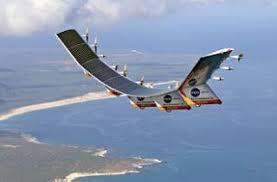High Altitude Long Endurance Systems: Capabilities and Applications

The global aerospace and defense landscape is being reshaped by the strategic imperative for persistent, wide-area surveillance and connectivity, a need squarely addressed by High Altitude Long Endurance (HALE) platforms. A market-level analysis of High Altitude Long Endurance systems reveals a sector experiencing robust growth, driven by the unique capability of these platforms to operate for extended durations—days, weeks, or even months—at altitudes above 60,000 feet. This positions them in the stratosphere, far above conventional air traffic and most weather phenomena, allowing them to function as "pseudo-satellites." The primary market drivers include escalating geopolitical tensions demanding continuous intelligence, surveillance, and reconnaissance (ISR), the growing need for resilient communication networks in underserved or contested areas, and expanding applications in civil domains such as environmental monitoring and disaster management. These platforms offer a compelling blend of satellite-like persistence and aircraft-like flexibility, providing a cost-effective and responsive alternative or complement to space-based assets, thereby fueling their increasing adoption by both military and commercial entities worldwide.
The value proposition of HALE platforms is rooted in their exceptional endurance and operational altitude. Unlike Medium Altitude Long Endurance (MALE) drones, HALE systems operate in a less congested and more benign atmospheric layer, enabling significantly longer mission times. This persistence is critical for missions that require uninterrupted observation of a specific area of interest, such as monitoring troop movements, tracking climate patterns, or providing continuous communication relays during a natural disaster. The market is witnessing significant investment in diverse propulsion technologies to achieve this endurance, ranging from traditional fuel-efficient turbofan engines on platforms like the Northrop Grumman Global Hawk to innovative solar-electric systems on ultra-lightweight aircraft like the Airbus Zephyr. The High Altitude Long Endurance size is projected to grow USD 39.28 Billion by 2035, exhibiting a CAGR of 7.3% during the forecast period 2025-2035. This growth reflects the broad recognition of HALE systems' ability to deliver cost-effective persistence that was previously unattainable with conventional aerial or space-based platforms.
Looking forward, the HALE market is evolving towards greater autonomy and enhanced payload integration. The next generation of HALE platforms will feature advanced artificial intelligence and machine learning algorithms, enabling them to perform more complex tasks with minimal human intervention, from autonomous navigation in dynamic environments to on-board processing and analysis of sensor data. This reduces the cognitive load on ground operators and accelerates the dissemination of actionable intelligence. Furthermore, the trend towards modular, open-architecture payloads allows for rapid reconfiguration of platforms for different missions, increasing their operational flexibility and value. The development of high-altitude platform stations (HAPS) as a component of future 5G and 6G communication networks represents a massive commercial growth vector, promising to connect the unconnected and support the burgeoning Internet of Things (IoT) ecosystem. This convergence of military and commercial demand ensures a vibrant and innovative future for the HALE market.
Top Trending Reports -
Applied AI in Cybersecurity Industry
- Art
- Causes
- Crafts
- Dance
- Drinks
- Film
- Fitness
- Food
- Games
- Gardening
- Health
- Home
- Literature
- Music
- Networking
- Other
- Party
- Religion
- Shopping
- Sports
- Theater
- Wellness
